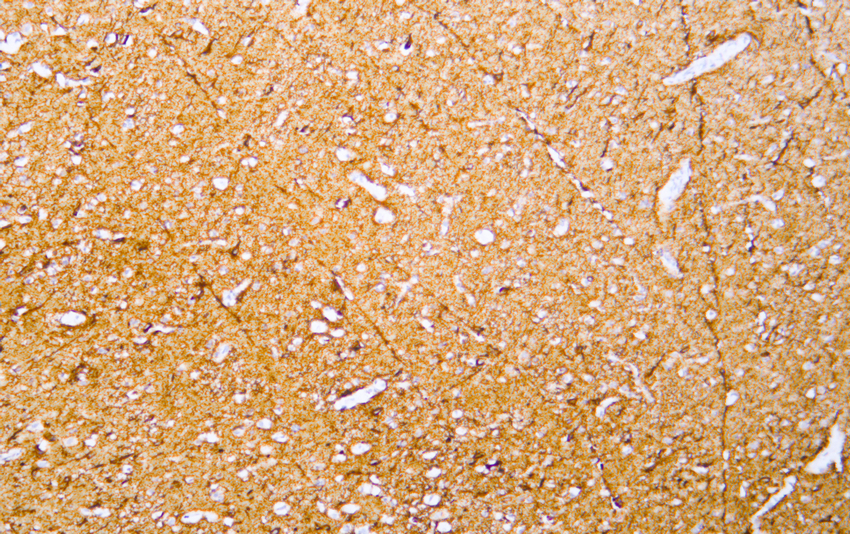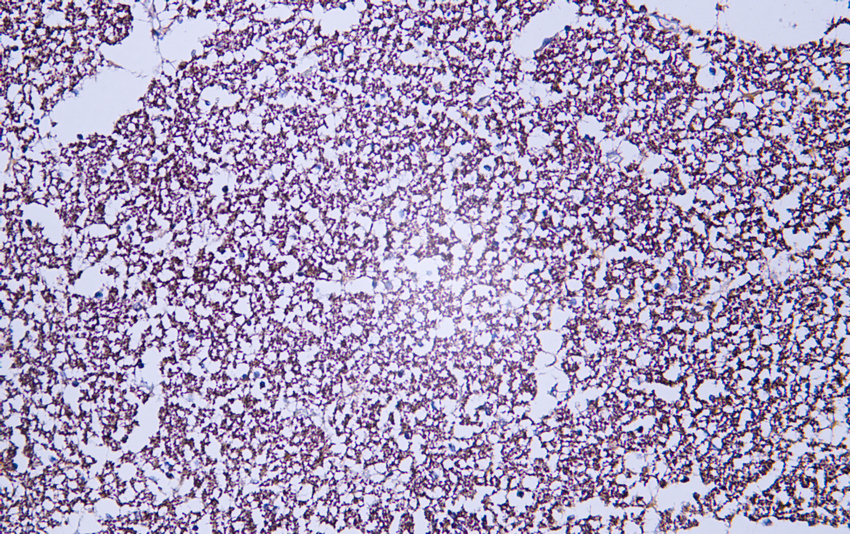Neurofilament (ABT208) IHC kit
- Catalog No.:IHCM6895
- Applications:IHC
- Reactivity:Human;
- Target:
- NF-L
- Fields:
- >>Amyotrophic lateral sclerosis;>>Pathways of neurodegeneration - multiple diseases
- Gene Name:
- NEFL NF68 NFL
- Protein Name:
- Neurofilament
- Human Gene Id:
- 4747
- Human Swiss Prot No:
- P07196
- Immunogen:
- Synthesized peptide derived from human Neurofilament AA range: 400-543
- Specificity:
- The antibody can specifically recognize human Neurofilament protein, especilaly NF-L protein.
- Source:
- Mouse, Monoclonal/IgG2b, kappa
- Purification:
- The antibody was affinity-purified from ascites by affinity-chromatography using specific immunogen.
- Storage Stability:
- 2°C to 8°C/1 year
- Other Name:
- Neurofilament light polypeptide (NF-L;68 kDa neurofilament protein;Neurofilament triplet L protein)
- Background:
- Neurofilaments are type IV intermediate filament heteropolymers composed of light, medium, and heavy chains. Neurofilaments comprise the axoskeleton and they functionally maintain the neuronal caliber. They may also play a role in intracellular transport to axons and dendrites. This gene encodes the light chain neurofilament protein. Mutations in this gene cause Charcot-Marie-Tooth disease types 1F (CMT1F) and 2E (CMT2E), disorders of the peripheral nervous system that are characterized by distinct neuropathies. A pseudogene has been identified on chromosome Y. [provided by RefSeq, Oct 2008],
- Function:
- caution:The sequence shown here is derived from an Ensembl automatic analysis pipeline and should be considered as preliminary data.,disease:Defects in NEFL are the cause of Charcot-Marie-Tooth disease type 1F (CMT1F) [MIM:607734]. CMT1F is a form of Charcot-Marie-Tooth disease, the most common inherited disorder of the peripheral nervous system. Charcot-Marie-Tooth disease is classified in two main groups on the basis of electrophysiologic properties and histopathology: primary peripheral demyelinating neuropathy or CMT1, and primary peripheral axonal neuropathy or CMT2. Neuropathies of the CMT1 group are characterized by severely reduced nerve conduction velocities (less than 38 m/sec), segmental demyelination and remyelination with onion bulb formations on nerve biopsy, slowly progressive distal muscle atrophy and weakness, absent deep tendon reflexes, and hollow feet. CMT1F is charac
- Subcellular Location:
- Cytoplasmic
- Expression:
- Cytoplasmic
- June 19-2018
- WESTERN IMMUNOBLOTTING PROTOCOL
- June 19-2018
- IMMUNOHISTOCHEMISTRY-PARAFFIN PROTOCOL
- June 19-2018
- IMMUNOFLUORESCENCE PROTOCOL
- September 08-2020
- FLOW-CYTOMEYRT-PROTOCOL
- May 20-2022
- Cell-Based ELISA│解您多样本WB检测之困扰
- July 13-2018
- CELL-BASED-ELISA-PROTOCOL-FOR-ACETYL-PROTEIN
- July 13-2018
- CELL-BASED-ELISA-PROTOCOL-FOR-PHOSPHO-PROTEIN
- July 13-2018
- Antibody-FAQs
- Products Images

- Human appendix tissue was stained with Anti-Neurofilament (ABT208) Antibody

- Human cerebrum tissue was stained with Anti-Neurofilament (ABT208) Antibody

- Human hippocampus tissue was stained with Anti-Neurofilament (ABT208) Antibody

- Human prostatic adenocarcinoma tissue was stained with Anti-Neurofilament (ABT208) Antibody



